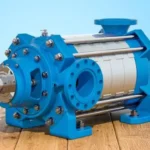A photodiode is a nifty semiconductor-based device that transforms light into electrical signals. And because of such devices, we are able to manipulate and bend the light to our own will. And that’s the prime reason these tiny wonders have found their way into everything from our everyday gadgets to top-of-the-line medical and industrial equipment. But as with any other technological advancement, it is not always sunshine and roses, there are certainly some downsides or challenges in using photodiodes. And if you are someone feeling curious to know about these pros and cons of photodiodes then we’d suggest you keep on reading because you are about to find that out. Let’s get going now.

Advantages of Photodiodes
If you are wondering what exactly makes Photodiodes so exciting and beneficial, then you should definitely check out the advantages listed below.
1. High Sensitivity to Light
Photodiodes are distinguished by their extraordinary sensitivity to light, which is due to key factors like responsiveness and quantum efficiency. These attributes allow them to detect a vast range of wavelengths, making them suitable for numerous applications. Photodiodes can be utilized for detecting ultraviolet (UV) light, visible light, and infrared light, which grants them wide-ranging applicability across various industries and scientific disciplines.
2. Speed and Response Time
Photodiodes also excel in their swift response times, making them the go-to choice for high-speed communication systems. This snappy feature is super important for stuff like fiber-optic communications and laser rangefinders, where every millisecond counts, and speedy data transmission is the name of the game. Thanks to their ability to process and send information at lightning speed, photodiodes ensure smooth and spot-on communication between devices and systems.
3. Low Power Consumption
Photodiodes are known for being energy savers, which makes them an awesome choice for systems that care about conserving power. This comes in really handy for things like remote sensors and portable gadgets, where managing power efficiently is an absolute must. By using just a tiny bit of energy, photodiodes help extend battery life and cut down on overall power usage, contributing to a greener and more eco-friendly approach to tech.
4. Reliability and Durability
As solid-state devices without any moving components, photodiodes offer greater reliability and durability compared to other light-detection technologies. Their sturdy nature assures a lengthier operational life, consequently reducing maintenance requirements and replacement expenses. This dependability leads to more consistent performance, which is especially important in sectors where accuracy and consistency are paramount.
5. Wide Operating Temperature Range
Photodiodes can operate effectively across a vast temperature spectrum, making them appropriate for harsh environments. Their capability to remain stable under extreme conditions guarantees reliable performance in a variety of industrial and scientific applications, including aerospace, automotive, and environmental monitoring. This versatility allows photodiodes to be used in diverse settings, delivering precise light detection even in the most demanding conditions.
Disadvantages of Photodiodes
Well, as with any other technological advancement, there is room for improvement with Photodiodes as well. And the advancements in these intricate devices are happening in real time as we speak. However, there are still a few downsides to using photodiodes, and here are the most prominent ones:
1. Restricted Dynamic Range
One of the main concerns when utilizing photodiodes is their restricted dynamic range, which results from saturation and non-linearity issues. When the incoming light intensity surpasses a certain threshold, the photodiode’s output begins to lose its capacity to accurately represent the incident light intensity, causing signal distortion. To tackle this problem, it is imperative to operate photodiodes within their ideal range and carefully choose the right device for a particular application to ensure precise signal representation and avoid saturation problems.
2. Noise Interference
Another challenge associated with photodiodes is the noise they produce, which can affect the signal-to-noise ratio and limit their efficacy in some applications. Various factors contribute to noise generation in photodiodes, such as thermal noise, shot noise, and dark current noise. To counter these effects and ensure optimal performance, it is essential to apply cautious design strategies and appropriate noise-reduction techniques.
3. Expenses and Intricacy
Manufacturing high-performance photodiodes can be costly due to their sophisticated design and elaborate production processes. Moreover, integrating these devices into various systems may require specialized expertise, which increases the overall complexity and expense of the project. To tackle these challenges, it is crucial to assess the balance between performance and cost when choosing photodiodes for specific applications. Additionally, collaborating with experienced professionals or seeking advice from experts in the field can help ensure a smooth and efficient implementation process, ultimately reducing costs and enhancing the overall success of the project.
Conclusion
With the constant progress of technology, scientists and engineers are pushing the limits of photodiode capabilities, aiming to overcome current constraints and uncover new applications. By comprehending and balancing the pros and cons of these multifaceted devices, we can optimize their utilization and contribute to the ongoing development of light detection and measurement technologies. The future of photodiodes is unquestionably bright, and we can anticipate further breakthroughs that will only amplify their importance in our increasingly interconnected world.

